Interview by Denisa Tomkova // May 12, 2020
The Norwegianization Policy of the late 19th century, which aimed to assimilate the native populations into a uniform Norwegian speaking nation, meant that generations of Sámi people lost ties to their culture through the loss of their language. Synnøve Persen is a Norwegian artist, poet and activist of Sámi origin who has been an influential figure in providing Sámi art its due status. She was one of the initiators in the foundation of the Sámi art organizations Sámi Dáiddajoavku / Sámi Artist Group and Sámi Dáiddačehpiid Searvi / The Sámi Artist’ Union in the 1970s.
A difficult and important task of the Sámi Artist Group was to dismantle the ethnographic perception of Sámi art and to restore it to its rightful place in the contemporary canon. In 1978, the group of young artists settled in the small town of Máze, where they started working together, fuelled by their belief that creating a community would make them stronger in fighting their political and cultural battles. Through their artistic practices, they aimed to correct the stereotypes that had been unduly attached to Sámi art. Today, the works of the Sámi Art Group members are exhibited in international contemporary art exhibitions, like the most recent documenta edition in Kassel in 2017. We talked to Persen about her work as a visual artist, activist and poet, and her contribution to the upcoming exhibition ‘The White, the Green, and the Dark’, presented by the Royal Norwegian Embassy in Berlin.
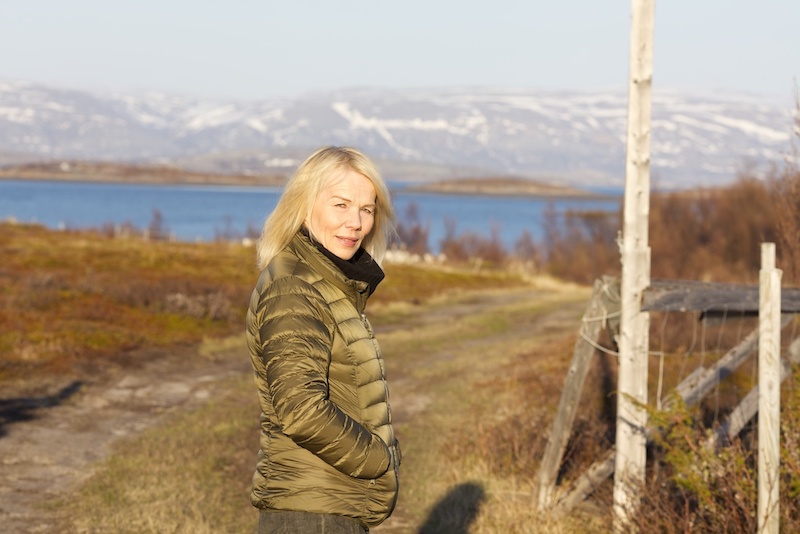
Portrait Synnøve Persen, // Photo by Kjell Ove Storvik
Denisa Tomkova: On your website, Jan-Erik Lundström describes your paintings as being “about the act of painting.” I really like that description, as your paintings are very tactile, they show the act of brush strokes, and have the qualities of abstract expressionism. How would you describe your artistic process and your approach to painting?
Synnøve Persen: The white canvas is always a challenge, as an unknown space to conquer for each new painting. Already, the choice of size decides a lot. The canvas, in a way, hides all the paintings you would like to paint; the beginning, the first strokes contain all those possibilities. The first colours may be a good start or may not. In a painting you can change direction many times. This was my working practice when I was younger, when I worked with oil colours (I had to give up the oil painting because of allergies). When I started acrylic painting after 30 years with oil colours, I feared this should be much more dramatic than it ended up being.
On the other hand, the artist’s life is usually full of time constraints, there was not much time to dwell on a change I nevertheless had to do. To explain the painting process may not be easy. I do not know yet for certain if I have a clear idea of where each process I start with on each canvas will lead me. Sometimes I think it is important not to know, as the process itself is an exploration. You have to be very open through the whole process, to be aware of the interplay between colours and composition. Lately, and maybe as a consequence of changing technic, translucency has become important, and maybe I find a symbiosis with the arctic landscape I am living in there.
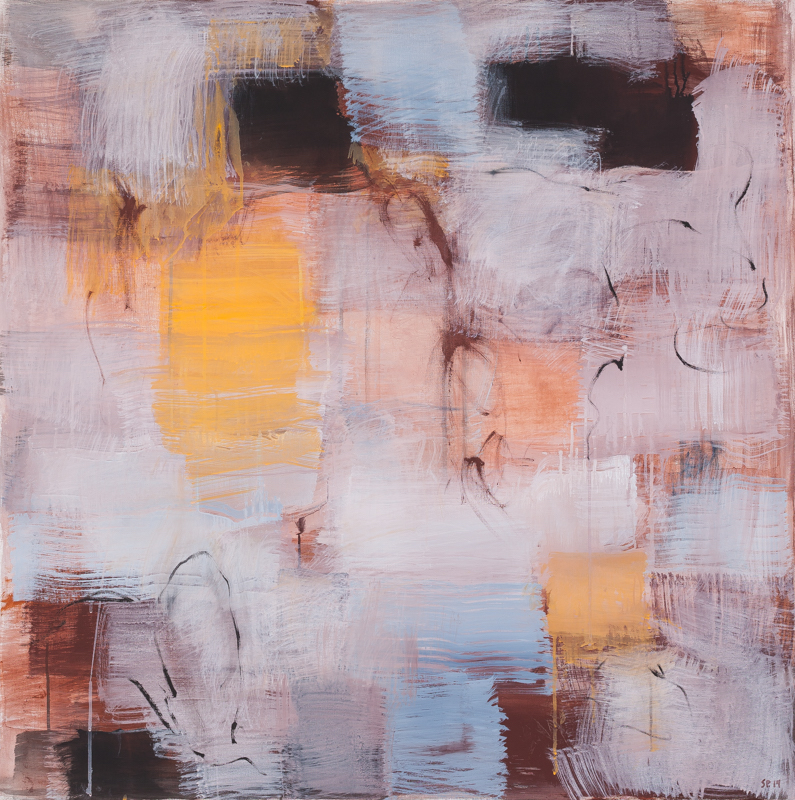
Synnøve Persen: ‘Unspoken’, 2014, acryl, 110×110 cm // Photo by Kjell Ove Storvik
DT: Colour and composition also play a significant role in your work ‘Sámi Flag Project,’ which you started work on in 1977, and which was presented at documenta14 in 2017. Can you please tell me about the strong political message of this work?
SP: The idea of the flag was based upon a vision. I was still a student at the Art Academy in Oslo. I saw my land without colours, hidden under the flags of Norway, Sweden, Finland and the very northwestern part of Russia. I was in my last year at the Art Academy and was supposed to learn some graphic technics. Never in my wildest dreams had I thought that these first trials with the silk screen technic would give such an effect. I was part of the young generation of Sámi looking for freedom from the oppression my parents’ generation and generations before them had had to face. We were angry and we wanted a change. We needed symbols to tell the world who we were: not Norwegians, Swedes, Finns or Russians. The flag was a freedom symbol.
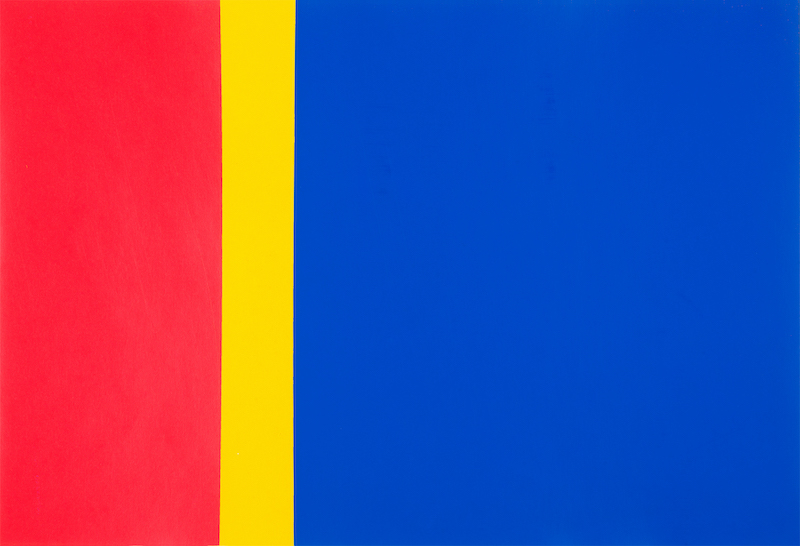
Synnøve Persen: ‘Sámi Flag Project’, silk screen 1977, This is an artistic project, not the official Sámi flag used today // Photo Marvin Pope
DT: In the upcoming exhibition ‘The White, the Green, and the Dark’ at the Norwegian Embassy in Berlin, we will be able to see your video installation ‘Psithurism’ (2014). Can you please tell me about this work?
SP: ‘Psithurism’: the sound of the wind through trees and the rustling of leaves. Its an adaptation of the Ancient Greek ψιθύρισµα (psithurisma) or ψιθυρισµός (psithurismos), from ψιθυρίζω (psithurizō, “I whisper”), from ψίθυρος (psithuros, “whispering”, “slanderous”). The project ‘Psithurism’ is a video from an aspen forest in Finnmark. The video refers to holy places in nature. The concept of sacred sites is known in many indigenous cultures around the world. A certain mountain, a forest, a lake may be defined as a sacred site. These places have a special significance. They convey that nature is infused with life, that nature is not to be consumed, but must be defended, cared for, respected. The concept of sacred sites is also close to the theory of animism.
I filmed ‘Psithurism’ in September 2014, while the yellowing process of the leaves was at its strongest. The film is authentic, the visual image is not edited. A take where neither sky nor ground is visible was chosen. Crucial elements are the rustling of yellow leaves, details in the auditory image, wind and whisks through the trees. The sound work has been essential to the entire project, as the sound is an important and fundamental element. ‘Psithurism’ is meant to convey a sacral image of nature in our close surroundings, but the video can also be a message of nature’s own spirituality, at a time when pressure on natural resources in northern areas is increasing.
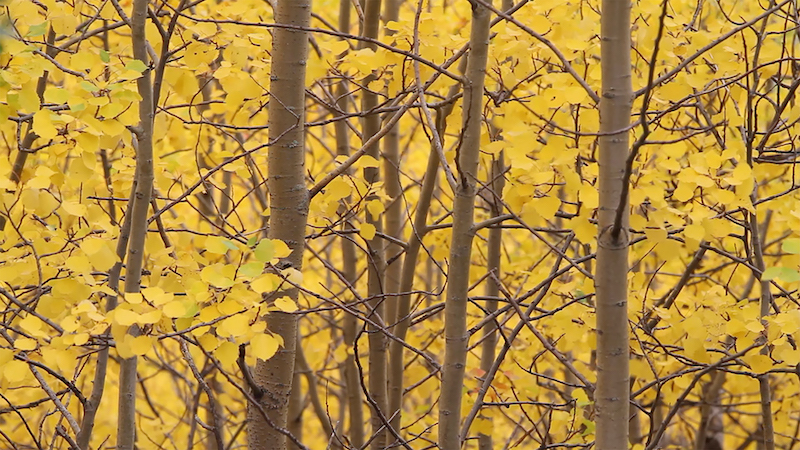
Synnøve Persen: ‘Psithurism’, 2014, video still // Photo by Kjell Ove Storvik, Courtesy of the artist
DT: You were one of the initiators of the Sámi art organizations Sámi Dáiddajoavku / Sámi Artist Group and Sámi Dáiddačehpiid Searvi / The Sámi Artist’ Union in the 1970s. What do you think the role of art is in political matters? Can you tell us more about these activist groups?
SP: In the 1970s, many artists started different kinds of groups for practical, economic, ideal and/or political reasons. To establish a group gave artists better working conditions, as the authorities would more readily support a collectivity over an unknown, lone young artist. The reasons for establishing the Sámi Artist Group were first and foremost cultural, but also ideal and political. The Sámi Artist Group wanted from their very first exhibition to oppose the stereotypes connected to Sámi art, culture and people. All the members of the group were educated at Art Academies and higher art institutions in the Nordic countries, they had a solid, professional basis to start their own artistic activity far away from the centres for art, but in the heart of Sápmi, their homeland. The Sámi Artist’ Union was supposed to gather Sámi artists over the national borders, which for so long had divided the Sámi people. We had a view we would be stronger together. We wanted to make our voices heard in the art world.
Our union revealed prejudiced attitudes in the art world, established to protect the western art, where indigenous art had no place. This was the beginning of our big work. From the Sámi perspective, art has played an important role through the last 40-50 years. In art, visual art, literature, music, theatre, Sámi artists have been able to express what was not possible to express in other ways. Sámi artists claimed the same kind for freedom of speech as other western artists to express the feeling of suppression. My generation of Sámi are the first generation who got a higher education. We were students at the universities and art academies in Oslo, Helsinki, Stockholm and other cities in the nordic countries. We considered ourselves equal with others and started the struggle to implement our understanding in our own societies.
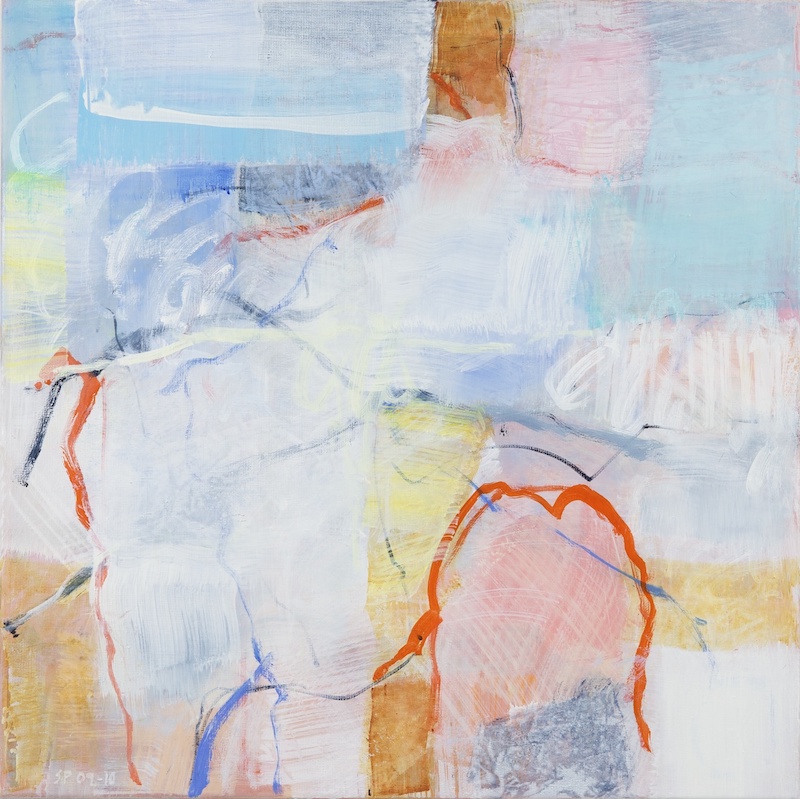
Synnøve Persen: ‘Sone 8, III’, 2010, oil, 60x60cm, // Photo by Kjell Ove Storvik
DT: The Sámi artist group in Máze was formed in 1978. Culturally, the group’s aim was to dismantle the ethnographic perception of Sámi art. Can you tell me more about how the group fought against this misconception?
SP: Our fight was first and foremost to correct the stereotypical understanding of Sámi art. With that we also received the immense task of answering all kinds of questions about the Sámi society, history and so on, as people knew very little about all these things, we had to contribute our knowledge to combat the general ignorance. That was very exhausting. We felt we had to try to correct the misleading information given about our people through hundreds of years by missionaries, priests and other authorities. In the end of the 1970s, the understanding of Sámi art was rather narrow, bound to certain motives; with every exhibition we had to underline that we might have another approach than what was expected of a Sámi artist. Four decades later, you could ask how this constant underlining affected us as young artists. Did it reduce our possibilities for personal development as artists? We had to answer all kind of questions, interpret our own works, also in an analytical way. It was, so to speak, hard to meet the reality out there.
DT: Your Sámi origin is also reflected in your poetry. Your work was part of the book ‘Poems from the Edge of Extinction,’ a collection of 50 poems in languages from around the world that have been identified as endangered. Why is it important to you to support and promote languages that are slowly dying out?
SP: My mother tongue has formed me as a person, my whole understanding of life is based upon how I learned to know the world. I feel very privileged to have access to a language like the Northern Sámi. I did not learn to read and write the Sámi language at school, that was part of the Norwegianization policies against the Sámi people. Many in my generation therefore lost the ties to Sámi culture through loss of language. To take back the language was a political act. To start writing literature in Sámi was a political act, for the survival and revival of the language. But the most important reason for me to use the Sámi language in poetry is the beauty of the language. Writing poetry in Sámi is my contribution to the survival of the language. As a poet writing in one of the world’s endangered language, I, of course, would have liked more people to be able to read the original texts. Most of my own people cannot read my poems. That is a very sad history. To me, writing in Sámi gives me a deep satisfaction, makes me feel like a whole person and is a very important part of my life as an artist.
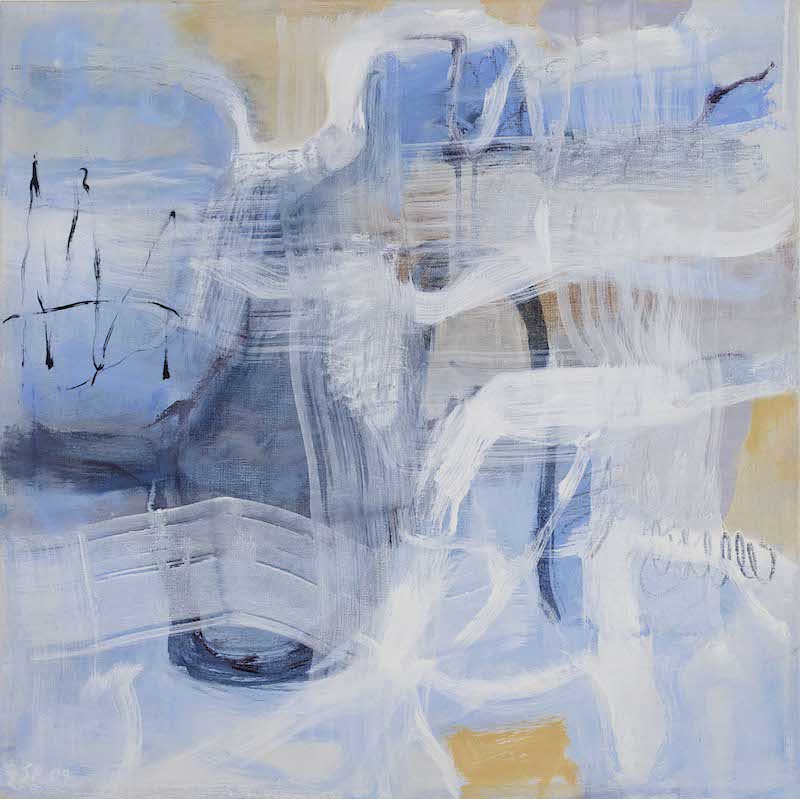
Synnøve Persen: ‘Sone 8 – II’, 2007-2009, oil, 60×60 cm // Photo by Kjell Ove Storvik
DT: As a poet what do you perceive as the advantages of translating and, on the contrary, what gets lost with translation?
SP: I write poetry in Northern Sámi, the language I feel gives me the best conditions to express inner life, as all my references connected to the emotional part of life lie in my mother tongue. Besides, the Sámi language is rich in words, a gift to every poet. I find the best and most accurate descriptions in the Sámi language. I have published five poetry books in Sámi, all of them translated and published in Norwegian. Except for my first book, I have translated my poems myself, and, in my last publication, with the excellent help from a Norwegian poet. Translation from Sámi to Norwegian is a demanding process as there are huge differences in structures between the two languages. The rich and wordy Sámi language gets minimized when translated into Norwegian, because Norwegian has fewer words. My second poetry book had extremely short poems, where I used the possibilities given in my mother tongue; a lot got lost in translation. Literature in Sámi does not have many readers, because so few have learnt to read the language. Translations are necessary to reach readers. Some of my poems have been directly translated from Sámi to English; as English has more words than Norwegian the translations into English in some way cover the original text better. Beside Norwegian and English, my poems are translated into German, Spanish, Finnish, Icelandic and a few into Armenian and Chinese.
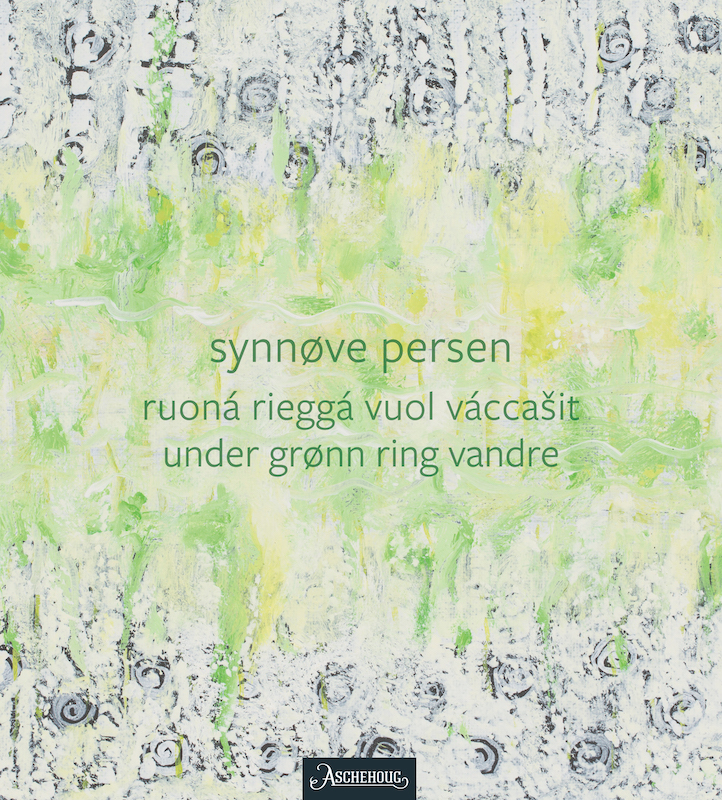
Synnøve Persen, Poetry book cover: ruoná rieggá vuol váccašit / under grønn ring vandre, 2017
This article is a part of our Features’ topic ‘Landscape’ and is presented in collaboration with the Royal Norwegian Embassy in Berlin on the occasion of their exhibition ‘The White, the Green, and the Dark: Contemporary Positions from Norway,’ in which Synnøve Persen is a participating artist. The exhibition, curated by Sabine Schirdewahn, explores concepts of identity and home through intimate portrayals of the region’s landscape, both ecological and social, using a wide variety of media from sound and film to textile and sculptural works. A further emphasis of the contemporary works on display is the presentation of works by artists who belong to the Indigenous ethnic group of the Sámi. To read more from this topic, click here.
Artist Info
Exhibition Info
ROYAL NORWEGIAN EMBASSY
Group Show: ‘The White, the Green, and the Dark: Contemporary Positions from Norway’
Exhibition: June 02 – Oct. 03, 2020
Fellehus, Nordic Embassies, Rauchstraße 1, 10787 Berlin, click here for map























